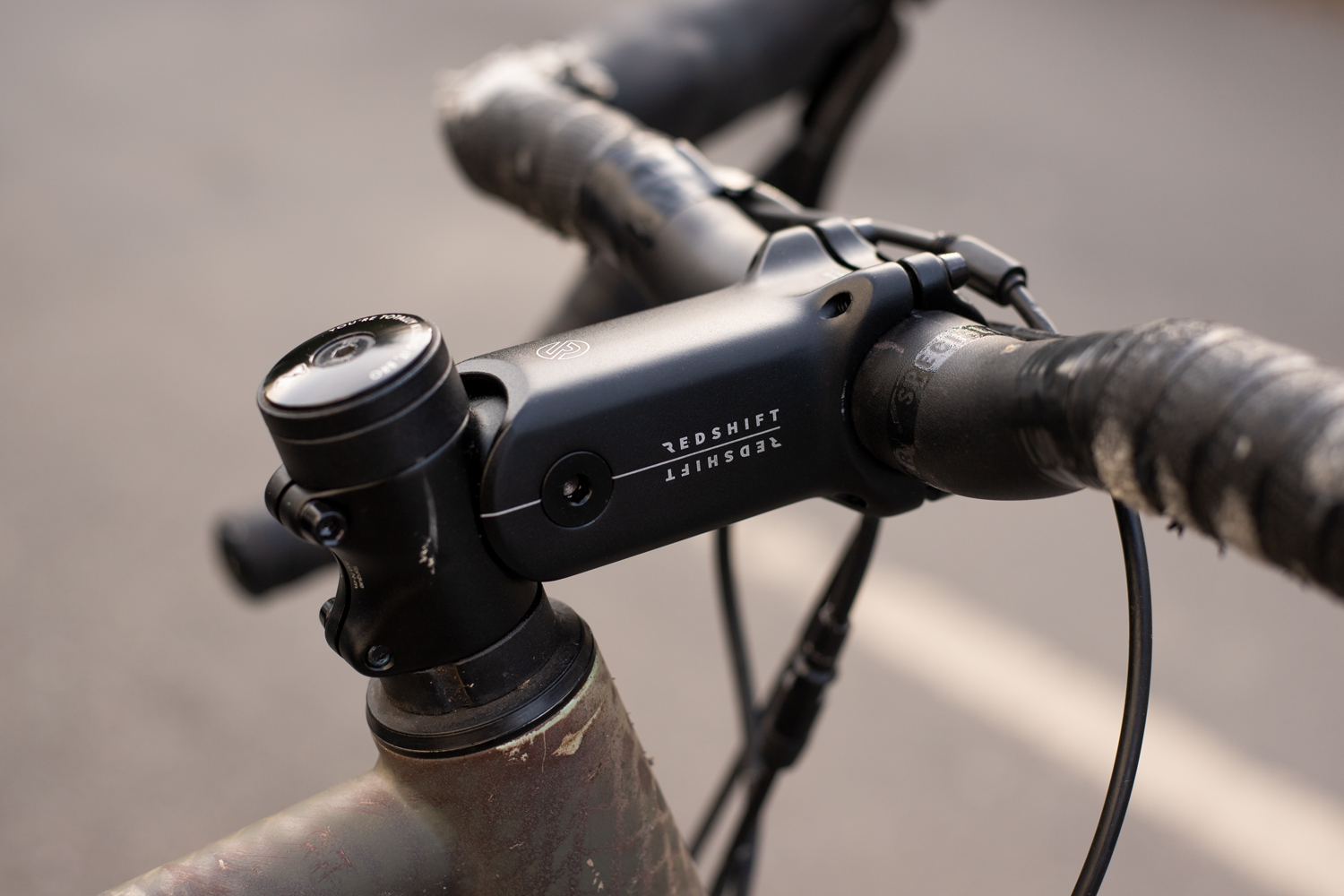Redshift Shockstop suspension stem review
Certainly an option if you want to add comfort to your handlebars, but not on the top of our wish list

The Redshift Shockstop suspension stem is a decent bid to provide an option to consumers to retrofit their rides with more compliance. In practice however I’m less convinced that it’s money well spent. Perhaps if I had a heinously stiff road bike I’d be tempted, but then you’re just patching a bigger problem altogether. In fairness though, the Redshift stem delivers on what it says and for that I can’t fault it, it’s just not for me.
-
+
An affordable solution for handlebar compliance
-
+
Integrates with most bikes
-
+
Adjustable
-
+
Available in multiple sizes
-
-
Heavier than other stems (238g)
-
-
Splay suspension alters geometry
-
-
Meagre travel
You can trust Cycling Weekly.
The words ‘suspension’ and ‘stem’ have never existed within the same sentence for me previously, firstly in the fact that the products in this market are thin on the ground, and secondly out of choice. I’ve never previously desired to induce any vertical compliance to my steering column, especially at the crucial load-bearing point of the stem.
In testing the Redshift Shockstop suspension stem, some of my preconceptions were questioned - but others were confirmed.
Construction
On first inspection the Redshift suspension stem appears like many other stems: standard 1-1/8th” fork clamping diameter and standard 31.8mm handlebar diameter compatibility; but you’ll not be forgiven for missing the giant hinge looking part in between those points. This hinge is not surprisingly actually a hinge, supported within the cavity of the stem by two elastomers that can be swapped out to provide differing levels of compliance based on rider weight and preference.

It’s a remarkably simple yet elegant system that can be adjusted by anyone with a basic set of allen keys, and providing you read the instructions carefully shouldn’t be too taxing either. Indeed when I received the stem it was set to a positive rise, but not five minutes later I’d had the internals dissected and reinstalled to achieve the minus 6 degrees I’m more familiar with.
From 80 through to 120mm in ten-millimetre increments and with the option for integrated tech mount out front, the stem is available for many different tastes and fits.
The latest race content, interviews, features, reviews and expert buying guides, direct to your inbox!
While it may not be the best looking stem out there, a product like this is designed to be functional first and foremost - providing up to 20mm of travel at the handlebars, smoothing out rough terrain as you go.
The Ride
It’s not been too long since a certain large bike brand brought stem located compliance back into the mainstream (if that's too cryptic, see the FutureShock on the Specialized Roubaix and Diverge - Ed) and it’s been met broadly positively, but that’s in part thanks to the explanation of axial compliance vs splay compliance and the characteristics of both. The FutureShock offers axial (vertical) compliance, where the bars bob up and down, whilst this system relies on splay compliance meaning they move slightly fore and aft.
One of the key characteristics of splay compliance is its tendency to change the geometry of either the bike or bike fit during its active phase.

Put it like this, the Shockstop stem is a shortcut to handlebar compliance and a great example of not re-engineering an industry standard (such as the steerer tube of our forks) but instead using technology to integrate with what already exists. However, because of those parameters it means that currently, the system of compliance is good old fashioned splay technology, and that means when the road gets rocky, my handlebars move up and down: good; but they also rotate ever so slightly, adjusting the relative placement of my hoods, brake levers and every other contact point: not so good.

At worst case that would feel like your handlebars slipping as you ride through rough terrain, thankfully I can report that the Shockstop doesn’t feel like this, which I must admit I was terrified of, but there’s something in the back of my mind that can’t shake the unease of my steering apparatus having a certain amount of discretion as to where it feels it should be placed at any given time.
The Shockstop does in fact feel quite stiff to ride, which is reassuring after what I’ve just alluded to, but it brings me to the point of wondering if handlebar compliance is even worth it. The pneumatic compliance of my tyres offers tunability above what I’ve been comfortably able to achieve with this stem, and really if I was looking for more I’d be hard to convince that classic fork suspension wasn’t a better investment.
Value
The Redshift is certainly one of the most cost effective ways of finding more comfort at the handlebars. It's cheaper than investing in a brand new bike, offering compliance built into the headtube via the likes of the Specialized FutureShock. However, running 45c tyres I could barely notice the difference - making the £149.99 outlay feel a little excessive.